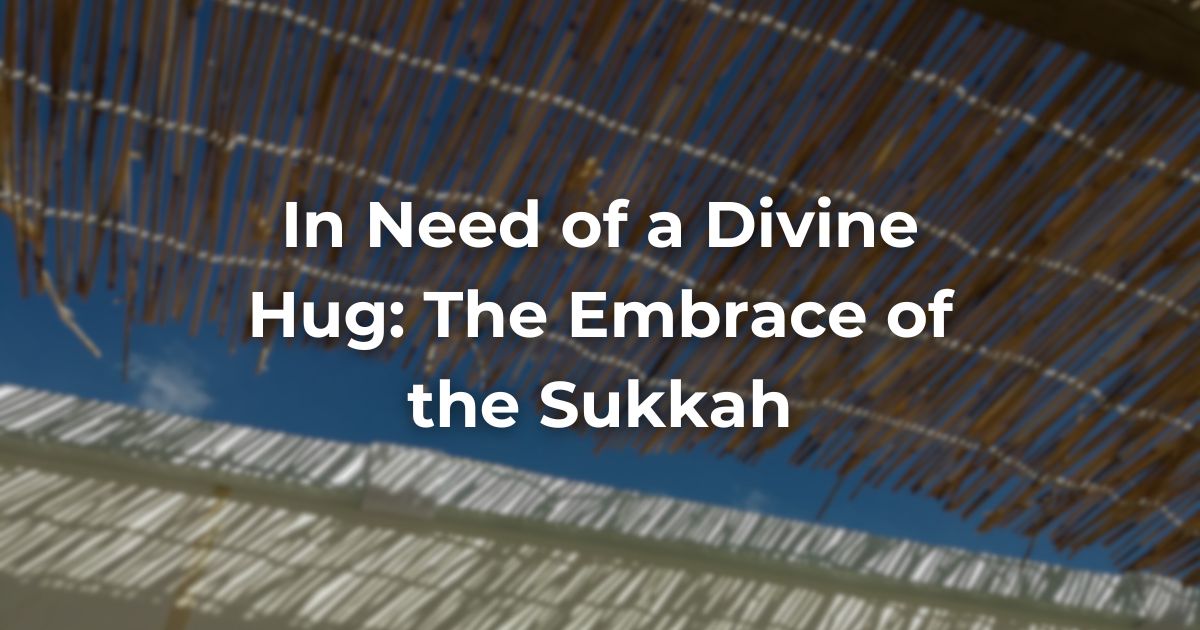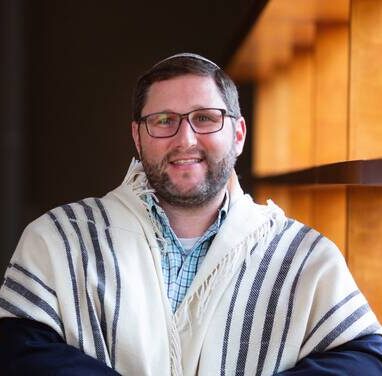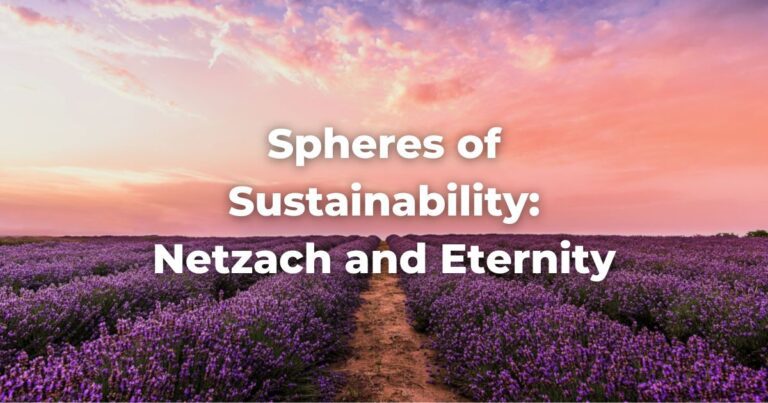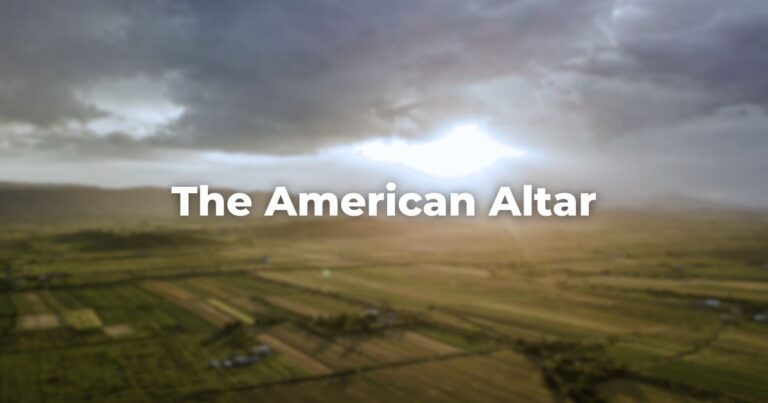This piece is part of Exploring Judaism’s 5785 High Holiday Reader. Download the whole reader here.
Sukkot is most commonly referred to as z’man simchateinu, the time of our joy. In some ways, that is a suitable name. The feelings of enjoying a beautifully constructed and completed sukkah, of eating the first meal with friends and family as the fall air sets in, and of course dancing with the TorahRefers to the first five books of the Hebrew Bible, the Tanakh, also called the Five Books of Moses, Pentateuch or the Hebrew equivalent, Humash. This is also called the Written Torah. The term may also refer to teachings that expound on Jewish tradition. Read more, are all reasons to smile and celebrate. The Torah emphasizes that “you shall rejoice before God all seven days” (Leviticus 23:40).
While somewhat unusual for the Torah to legislate emotion, for so many reasons, experiencing joy on Sukkot is fitting. By the time I get to Sukkot, I’m already feeling the relief of making it through more than half of the High Holidays.
At the same time, Sukkot is also a time of acknowledging fragility and vulnerability. You might have experienced a moment of heartache when the Sukkah topples in a fall storm. Perhaps it’s the time when the temperature drops just enough that it feels too cold to eat outside, not to mention having to run inside when the rain begins to pour, and your meal is ruined.
The “time of our joy” is tempered, or at least acknowledged, by reading Kohelet, the Book of Ecclesiastes. Kohelet reminds us of the array of emotions that are ever-present in life by naming a series of disparate dualities: a time to be born and a time to die, for planting and uprooting, tearing and building, weeping and laughing, wailing and dancing, silence and speaking, for war and peace (Ecclesiastes 3:18).
These polarities hit home as we move from the beginning to the end of the holiday season and return to a normal ebb and flow of the year. Yet over the last year, with the war in Israel and Gaza, we’ve lived firsthand the push and pull from one emotional extreme to the other.
This year, however, I feel a certain unease about Sukkot. On the one hand, I love the fall festival and can’t wait to enjoy a hot bowl of soup surrounded by friends and family in our family-made hut. Conversely, the holiday’s celebratory feel is scarred by the first-year commemoration of October 7 and the numerous tragedies that befell Israel, the Jewish people, and beyond on that day and in the days and months since.
In some ways, I’m embracing the emotional motif found elsewhere in liturgy, yearning for God’s protection of all those who remain in harm’s way, young and old, Israelis and Palestinians, the hostages and their families, and those who have been the victims of anti-Semitism and hate in “Sukkat Sh’lomecha”, God’s Sukkah of peace (see the evening prayer “Hashkivenu”). This year, with so many emotions, I need a Divine hug to hold me in the emotional complexity of life.
A beautiful midrashThis word is used in two ways, as both a concept and a literature. As a concept, midrash is the expansive interpretation of biblical texts. The term is used to describe the practice of rabbinic interpretation. As a text, it refers to specific collections of interpretations, particularly from the third to ninth centuries in the Land of Israel and Babylonia. Plural: Midrashim
Read more, a rabbinic story, imagines God holding and embracing us. Song of Songs teaches, “[God’s] left [arm] is under my head, and His right embraces (literally hugs) me” (Song of Songs 2:6). The midrash expands the ideas of the verse suggesting that God’s left arm is like a Sukkah and the right arm the clouds of God’s Divine presence (Shir Ha-Shirim Rabbah 2:6). The midrash resonates in several ways.
First, it calls to mind the interpretation of a Sukkah, namely the Sukkah as a physical structure we build or God’s clouds of glory (See Babylonian TalmudReferring to one of two collections, the Jerusalem and Babylonian Talmuds, edited in the 6th century, that contains hundreds of years of commentary, discussion, and exploration of the ideas in the Mishnah. One could describe it as Mishnah + Gemara = Talmud Read more, Tractate Sukkah 11b) that protected our ancestors while wandering in the wilderness. Alternatively, I picture the four species, the lulav, etrog, hadas, and aravah (the palm fronds, citron, myrtle, and willows), bound tightly and held with our right and left hands coming together as one.
In his book, Divrei Shmuel, Rabbi Shmuel Weinberg, the Second Slonimer Rebbe (Belarus, 1850-1916, with thanks to Rabbi Avi Strausberg for pointing me to this source), imagines the holiday of Sukkot through the lens of light, literally being embraced and surrounded by God’s warmth and Divine light. He teaches,
…a Jewish person brings all of themselves into a Sukkah, and it surrounds them from all sides, and for his reason, this mitzvah is balanced against all mitzvot because, amongst all other mitzvot, there is no [other] mitzvah which a person enters into with all of their body.
I love this emotional connectedness to Sukkot. Sukkot is about a complete embrace, body, and soul, where we are each held by the walls of the Sukkah, or more broadly, by God’s Divine hug.
Sukkot, then, becomes less a holiday about one specific emotion and more about learning to hold and be held by each other and God no matter what we are feeling. It’s a holiday of being present in the joy and sadness, pain and healing, struggle and uncertainty, fragility and strength, when things fall down and when we build them back up again. Perhaps this year, we should learn to experience the embrace of Sukkot by embracing one another while knowing that God is reaching out to embrace us, too. In doing so, even in times of darkness, we might share the light that comes from reaching out and embracing one another and God, when we need it the most.
Author
-

Rabbi Corey Helfand joined Ohr Kodesh Congregation (OKC) in July 2021. Prior to leading OKC, Rabbi Helfand served as the senior rabbi at Peninsula Sinai Congregation (PSC) in the Bay Area. Under his rabbinic leadership OKC is a thriving, sacred community known for its member engagement. A Midwest native, Rabbi Helfand is a diehard Kansas City sports fan. He is married to Jenny Ackerman, a clinical social worker, and together they have three children: Eden Leora, Matan Judah, and Jonah Gavriel. He enjoys all things outdoors, watching and playing sports, and living up to his name, Rabbi MacGyver. Rabbi Helfand is a master community builder, a gifted teacher, speaker, pastoral presence, and storyteller. Be prepared to learn, laugh and deepen your love with Judaism.
View all posts






